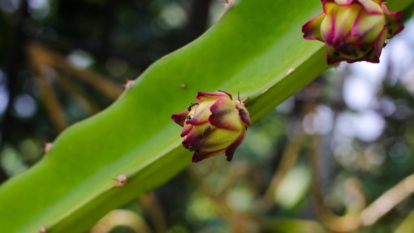Dragon fruit, also known as pitaya, is an exotic succulent that has garnered attention for its stunning appearance and sweet, unique flavor. Its vibrant colors and unusual shape make it a coveted addition to any garden. However, cultivating this tropical treasure is not without its challenges. Here, we delve into some of the common issues that dragon fruit plants may encounter and explore effective solutions to ensure a bountiful yield.
One of the most enchanting characteristics of the dragon fruit is its flowers, which bloom for a single night, exuding a captivating fragrance. Unfortunately, with such beauty comes an array of potential problems. Understanding and addressing these issues is essential for any gardener passionate about cultivating this remarkable plant.
Let’s embark on a journey to uncover some prevalent dragon fruit plant problems and learn how to rectify them while maintaining the visual appeal of this spectacular plant.
Environmental Influences on Growth
The dragon fruit plant thrives in warm, tropical climates, which means gardeners located in temperate regions may face significant challenges. When exposed to temperatures below 32°F (0°C), dragon fruit can experience severe stress or die. Moreover, too much humidity can promote fungal diseases, while insufficient water often results in a disappointing harvest.
Understanding Microclimates
To cultivate healthy dragon fruit, it’s imperative to assess the microclimates within your garden. Look for sheltered areas that receive plenty of sunlight but are shielded from harsh winds. If you’re in a particularly cool region, consider using raised beds or planters that can be moved indoors when temperatures plummet. Additionally, utilizing cloches or heat lamps during colder months can maintain the necessary warmth.
Watering Wisely for Nourishment
While the dragon fruit plant craves hydration, it is also susceptible to root rot caused by overwatering. Establishing a balance is crucial. Soil must be well-draining, and while the plant enjoys regular watering, it’s essential to allow the top few inches of soil to dry out between waterings. A moisture meter can be incredibly useful for monitoring soil conditions and ensuring optimal watering schedules.
Common Pests and Diseases
Dragon fruit plants can be vulnerable to several pests, including mealybugs, scale, and aphids. These small invaders often congregate on the plant’s pads, siphoning off vital nutrients and potentially transmitting harmful diseases. Notably, the dragon fruit is particularly at risk from the pesky mealybug, which can cause severe decline if not addressed promptly.
Identifying Infestations Early
Regular inspections of your dragon fruit plants are essential in catching infestations early. Look for white, cottony masses on the pads, as these are telltale signs of mealybugs. A gentle wipe with a soapy cloth can remove these pests, and for larger infestations, a neem oil spray can effectively deter them without posing a threat to the plant or environment.
Addressing Fungal Threats
Pests aren’t the only concern. Fungal diseases, such as powdery mildew and root rot, can tragically derail your growing efforts. Powdery mildew presents as white powdery spots on pads and can hinder photosynthesis. To combat this, ensure proper air circulation around the plant and apply fungicides suitable for cacti. It’s also wise to avoid watering from above to minimize dampness on the pads.
Nutritional Deficiencies
Just like any other plant, dragon fruit requires specific nutrients to thrive. A shortage of nutrients can lead to stunted growth, discolored pads, and poor fruit production. Yellowing pads often indicate a nitrogen deficiency, while red spots may suggest phosphorus deficiency. Understanding macronutrients and micronutrients is essential for fostering a thriving dragon fruit plant.
Soil Amendments for Optimal Growth
To mitigate nutritional deficiencies, ensure the use of a high-quality cactus soil mix that is rich in organic matter while maintaining excellent drainage. Supplements, such as well-balanced slow-release fertilizers, can help restore lost nutrients. Regularly amending the soil and monitoring nutrient levels can create a fertile environment, encouraging lush growth and fruitful harvests.
Aesthetic Appeal and Plant Care
Despite the potential challenges inherent in cultivating dragon fruit, the aesthetic appeal of this plant remains unparalleled. Its unique geometric pads and vibrant blooms enhance any garden space. When cared for properly, the dragon fruit plant thrives, offering not only visual splendor but also a tantalizing fruit that is truly a culinary delight.
Incorporating Companion Plants
For those wishing to enhance their dragon fruit’s charm while promoting overall health, consider integrating companion plants. Planting flowering herbs and other succulents can cultivate a diverse ecosystem, attracting beneficial insects while warding off pests. This symbiotic relationship fosters a healthier garden, promoting the vitality of the dragon fruit plant.
In conclusion, while fostering dragon fruit can pose challenges, understanding these common problems and implementing effective solutions ensures that gardeners can enjoy the beauty and bounty of this extraordinary plant. Through thoughtful care and attention to environmental conditions, pests, nutrition, and aesthetics, dragon fruit plants can flourish, transforming gardens into vibrant, tropical paradises.





Leave a Comment